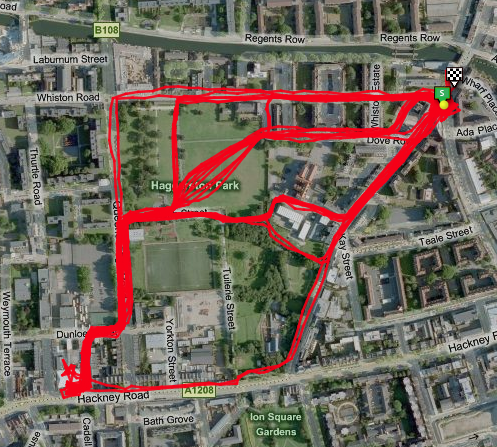Cross-posted from the Hodder Geography Nest blog, where I am one of this month’s guest-bloggers.

I was walking down Bishopsgate in the City of London yesterday, and I noticed the giant concrete “core” of the Pinnacle, the City’s next skyscraper, has finally started to rise out of the ground. It’s just one of a number of very tall buildings now under construction in London, after a couple of quiet years due to the economic conditions. The Pinnacle, also known as the Bishopsgate Tower and nicknamed the Helter-Skelter because of its spiral shape, will be 288m tall and is due to be completed by the end of 2012.
 Next door, the Leadenhall Building is due to commence construction in early 2011, it will be 225m high and also has a nickname, the Cheese Grater. Just up the road is the Heron Tower, 230m high and was completed in July, it opens early next year. Not far away is 20 Fenchurch Street, nicknamed the Walkie Talkie because of its bulging design, which is due to start construction any day now and will be 160m high. Finally, just across London Bridge, is the Shard, which will be the tallest of all – the main core has already risen 60 stories high, and the building will be 310m high when complete, again in 2012, making it the tallest building in the European Union. A photograph of the Shard under construction is on the right.
Next door, the Leadenhall Building is due to commence construction in early 2011, it will be 225m high and also has a nickname, the Cheese Grater. Just up the road is the Heron Tower, 230m high and was completed in July, it opens early next year. Not far away is 20 Fenchurch Street, nicknamed the Walkie Talkie because of its bulging design, which is due to start construction any day now and will be 160m high. Finally, just across London Bridge, is the Shard, which will be the tallest of all – the main core has already risen 60 stories high, and the building will be 310m high when complete, again in 2012, making it the tallest building in the European Union. A photograph of the Shard under construction is on the right.
Many of these new skyscrapers will have public viewing galleries and rooftop restaurants, so for those without a fear of heights, it is going to be an exciting few years.
 An artist’s impression of the Pinnable is on the left. Three of the four buildings on the right of the picture have now been demolished – 30 St Mary Axe, popularly known as the Gherkin, remains, but the two square buildings will soon instead be replaced with the Cheese Grater and the Walkie Talkie. The building at the front has also been demolished and replaced with a new mid-level office building.
An artist’s impression of the Pinnable is on the left. Three of the four buildings on the right of the picture have now been demolished – 30 St Mary Axe, popularly known as the Gherkin, remains, but the two square buildings will soon instead be replaced with the Cheese Grater and the Walkie Talkie. The building at the front has also been demolished and replaced with a new mid-level office building.
It’s anything but straightforward to build a skyscraper in London though. The planning process takes many years, and many organisations voice objections at the public enquiries, notably English Heritage, which manages the historic built environment of the country. The costs of building a skyscraper are of course very high, and there is always the risk that the demand for office space has dropped by the time the building is finally completed, as happened with the Broadgate Tower last year.
There is one other factor that is special to London – St Paul’s Cathedral, or specifically, viewing corridors to it. There are ten designated places in London, from which the view to the cathedral must be uninterrupted. Some of the places include Primrose Hill, Greenwich Park, Parliament Hill on Hampstead Heath, Alexandra Palace and most interestingly King Henry VIII’s Mound in Richmond Park. The latter view is through a small hole cut in the hedge on the mound, allowing a suprising glimpse of the cathedral standing nearly 10 miles away.
One very different kind of building development that opened last fortnight was One New Change, a shopping mall and offices on Cheapside, directly east from the cathedral. It is just 40m high, despite having as much floor space as the 225m Leadenhall Building. The building height was very deliberately fixed, so that the building appears to “nestle” alongside St Paul’s rather than overshadowing it.
The new City skyscrapers are all clustered together in the eastern part of the Square Mile, where they don’t impact on the St Paul’s protected views – by not blocking the building, appearing to be close by it from the viewpoints, or adding a dominating backdrop. Indeed, one of the reasons why the Cheese Grater building slopes back is to minimise its impact on the skyline with respect to the cathedral. No super-tall skyscrapers will be appearing immediately beside the cathedral, or to its north or west, any time soon.
The map below shows some of the protected views to St Paul’s Cathedral – marked with the red pin. King Henry VIII’s Mound is marked with the green pin.

The image of the Shard under construction is CC-By-SA George Rex photography on Flickr. The artists impression of the Pinnacle is CC-By-SA Will Fox on Wikipedia. The OpenStreetMap screenshot is of data which is CC-By-SA OpenStreetMap contributors. The photo of St Paul’s Cathedral with the pre-2007 skyscrapers is by the author.










